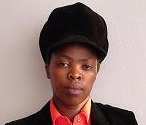Pussy Riot – Russian Punk Group
 Feminist punk collective Pussy Riot made international headlines in 2012 when they were arrested for their anti-Putin performance in Christ the Saviour Cathedral, Moscow. Maria Alyokhina, Nadezhda Tolokonnikova and Yekaterina Samutsevich performed the so-called punk prayer in February 2012, imploring the Virgin Mary to “throw Putin out”. International media followed the consequent court case closely, many denouncing it as no different from a Communist show trial.
Feminist punk collective Pussy Riot made international headlines in 2012 when they were arrested for their anti-Putin performance in Christ the Saviour Cathedral, Moscow. Maria Alyokhina, Nadezhda Tolokonnikova and Yekaterina Samutsevich performed the so-called punk prayer in February 2012, imploring the Virgin Mary to “throw Putin out”. International media followed the consequent court case closely, many denouncing it as no different from a Communist show trial.
In August 2012, the three were sentenced to two years in jail for hooliganism motivated by religious hatred, although Samutsevich was later freed on appeal. Despite Putin’s attempt to make an example of the trio, they have come to represent the struggle for free speech and justice in Russia and garnered support worldwide including from fellow musicians, among them Madonna, Sting and Yoko Ono.
The verdict was a bitter blow for freedom of expression in Russia, which has been under increasing attack since Putin’s re-election to the presidency in March 2012. But Pussy Riot members remained defiant, and delivered clear, pointed and excoriating attacks on the Putin regime in their closing statements from the dock. Yekaterina Samutsevich explained the setting for their protest:
“That Christ the Saviour Cathedral had become a significant symbol in the political strategy of the authorities was clear to many thinking people when Vladimir Putin’s former [KGB] colleague Kirill Gundyayev took over as leader of the Russian Orthodox Church”.
Maria Alyokhina spoke more generally about her country: “Russia, as a state, has long resembled an organism sick to the core. And the sickness explodes out into the open when you rub up against its inflamed abscesses. At first and for a long time this sickness gets hushed up in public, but eventually it always finds resolution through dialogue.”
As punk musician John Robb said “the 40 seconds performance in Christ the Saviour Cathedral was like the sound check for their performance in the dock”.
Photo: Demotix / Maria Pleshkova
Zanele Muholi – South African Photographer
 Zanele Muholi is an award-winning photographer and LGBT activist whose work focuses on gender and sexual identity in post-Apartheid South Africa. The Open Society Initiative for South Africa has described her as “one of the country’s foremost artists”. Through her work, Muholi has documented the lives of the South Africa’s black lesbians in a manner that questions traditional perceptions of the black female body.
Zanele Muholi is an award-winning photographer and LGBT activist whose work focuses on gender and sexual identity in post-Apartheid South Africa. The Open Society Initiative for South Africa has described her as “one of the country’s foremost artists”. Through her work, Muholi has documented the lives of the South Africa’s black lesbians in a manner that questions traditional perceptions of the black female body.
“In the face of all the challenges our community encounters daily, I embarked on a journey of visual activism to ensure that there is black queer visibility,” she told the New Yorker. Her images are both a statement and an archive, “marking, mapping and preserving an often invisible community for posterity”.
Although South Africa bans discrimination on the basis of sexuality, hostility towards sexual difference is pervasive and extremely violent. Homosexuality is still taboo and lesbians have been the targets of horrendous hate crimes including murders and “corrective rape”. Zanele told Index “Between March and September 2011, four lesbians had been murdered and between June and Nov. 2012, eight black lesbians have been killed. The political climate does nothing for the rights of those in danger right now.”
In 2009, Lulama Xingwana, the then minister for arts and culture, walked out of one of Muholi’s exhibitions. Xingwana later told press that she found the images of nude, lesbian couples “immoral” and against “nation-building”. As Zanele: “Many who have come out in the black community have been ostracised, disowned and others harmed. The social climate is that of fear. The townships are gripped by unthinkable violence and fear. “
Zanele has continued to work in spite of this hostility. However she suffered the greatest attack possible on an artist last year when more than 20 external hard drives representing more than five years’ work were stolen from her flat. One contained images of the funerals of three lesbians killed in hate crimes. “It was devastating, I got depressed and I went into mourning, but it also sparked a fierce desire in me, to continue to create and document. It temporarily set me back, but I am back on my grind.”
Photo: Flickr / museedesconfluences
Haifaa al Mansour– Saudi-Arabian film maker
 In October 2012, filmmaker Haifaa al Mansour broke new ground in Saudi Arabia. Not only did she create the first film to be shot entirely in Saudi Arabia, but she is also the country’s first female filmmaker. No small feat in a country where women cannot drive, vote or work with men. Under the Saudi guardianship system, women are treated like minors. Regardless of their age, they are forbidden from travelling, studying or working without consent from their male guardians.
In October 2012, filmmaker Haifaa al Mansour broke new ground in Saudi Arabia. Not only did she create the first film to be shot entirely in Saudi Arabia, but she is also the country’s first female filmmaker. No small feat in a country where women cannot drive, vote or work with men. Under the Saudi guardianship system, women are treated like minors. Regardless of their age, they are forbidden from travelling, studying or working without consent from their male guardians.
Against this backdrop, Al Mansour pressed ahead with her film Wadjda, which was shot entirely in Saudi Arabia using local actors, including two women in leading roles. The film follows a 10-year-old girl in the capital Riyadh who longs for a bike even though it is forbidden for women to cycle. But instead of being frustrated by the country’s strict laws, Al Mansour looked for innovative solutions to the challenges she faced. The film has received critical acclaim in the West. E Nina Rothe, for instance, described her as a ‘talented, ground-breaking film maker’ in the Huffington Post.
In a society where starring in films is frowned upon, finding female cast members was just one of these challenges. Another was the fact that Saudi Arabian women are not allowed to walk the streets alone. As a result, Al Mansour was forced to rely on location scouts to find the perfect spots to film. Filming also proved tricky and when in conservative neighbourhoods, she hid in a van and directed the cast from a phone or walkie-talkies.
Even though Al Mansour’s first feature film has received widespread critical acclaim, the chances are it won’t be shown in her home country, where there are no cinemas. She hopes however that people will watch it on satellite television or on DVD. Like other countries in the region, Saudi Arabia was hit by a wave of popular discontent in early 2011. In the wake of the Arab Spring, the authorities have clamped down on public criticism of officials or government policies.
Photo: Shutterstock.com / andersphoto
Aseem Trivedi – Indian Cartoonist
 25-year-old Indian cartoonist Aseem Trivedi has emerged as one of India’s most controversial satirical artists. In September 2012, he was taken into custody and charged with sedition for allegedly ‘insulting the constitution’. The complainant against him claimed ‘there is nothing bigger than the Indian constitution’.
25-year-old Indian cartoonist Aseem Trivedi has emerged as one of India’s most controversial satirical artists. In September 2012, he was taken into custody and charged with sedition for allegedly ‘insulting the constitution’. The complainant against him claimed ‘there is nothing bigger than the Indian constitution’.
Trivedi’s cartoons are often scatological critiques of the authorities, showing politicians as animals urinating on the constitution. Other cartoons depict schoolchildren being taught ‘How To Be Corrupt’, and government officials making a drink from the blood of countrymen.
Trivedi has shown great courage in standing up to various attempts to silence him. In January 2012, his website Cartoons Against Corruption was suspended by the Mumbai Crime Branch for its supposedly offensive content – but shortly afterwards he reacted by establishing a blog hosting content in a similar vein. Speaking to the Wall Street Journal, he said his intention was to depict the ‘ailing truth’ of the nation and send a strong message to the population. His consistent claim that it is foolish to enshrine respect of national symbols in law has been crucial in forcing the Indian public to consider their own views on some of India’s more archaic laws around blasphemy and sedition. He also challenges Section 66a of the Indian government’s Information Technology Act, which curtails free expression online. During December 2012, Trivedi fasted for eight days in protest.
India’s record on free expression is far from exemplary. Kunal Majumber, principal correspondent for the Indian daily Tehelha, told Index, ‘“Here we are laughing at Pakistan for trying to prosecute an 11-year-old girl for blasphemy, but in our country we’re trying to prosecute someone for sedition. Sometimes it’s funny we call ourselves the largest democracy on earth.”
